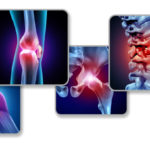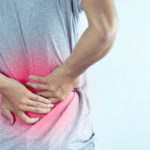According to Ayurveda, an accumulation of toxins in the body can lead to various health problems and imbalances in the Vata, Pitta and Kapha doshas, resulting in physical and mental symptoms. Vata is associated with movement and is believed to control bodily functions such as circulation, respiration, and elimination. An excess of Vata can lead to symptoms such as dry skin, constipation, and anxiety. Pitta is associated with metabolism and is believed to control digestive function and the transformation of food into energy. An excess of Pitta can lead to symptoms such as skin irritation, heartburn, and anger. Kapha is associated with structure and stability and is believed to control growth, lubrication, and the immune system. An excess of Kapha can lead to symptoms such as weight gain, congestion, and depression.
What is Panchakarma Treatment in Ayurveda?
Panchakarma treatment in Ayurveda is one of the therapies used to restore balance to the doshas, flush out toxins and rejuvenate the body. In this blog, let us learn how are the 5 steps of Panchakarma administered and how they treat ailments.
How are the 5 steps of Panchakarma Treatment Work?
Each of the 5 steps of Panchakarma treatment is designed to address specific types of toxins and imbalances in the body.
Vamana Panchakarma
Vamana Panchakarma is a type of therapeutic vomiting procedure used in Ayurvedic medicine to remove excess Kapha from the body. The process typically involves the following steps:
- Prior to the procedure, the patient is put on a special diet to help soften and loosen the accumulated Kapha in the body.
- The patient may undergo an oil therapy such as Abhyanga (massage with warm herbal oil) to prepare the body for the procedure.
- The patient is given a small dose of a medicated emetic, such as ghee mixed with medicinal herbs, to stimulate vomiting.
- The patient will then evacuate the Kapha from their system by inducing vomiting. This process is carefully monitored by a qualified Ayurvedic practitioner to ensure it is carried out safely.
- After the procedure, the patient is advised to rest and avoid solid food for a period of time, typically 12 to 24 hours. A light, easily digestible diet is then gradually reintroduced.
Virechana Panchakarma
It eliminates impurities from the small intestine through the use of purgatives. The procedure is performed on individuals with dominant Pitta and is carried out in the following sequence:
- Before the procedure, the patient may undergo an oil therapy such as Abhyanga (massage with warm herbal oil) to prepare the body for the procedure.
- The specific medication used in Virechana Panchakarma may include herbal purgatives, such as triphala or castor oil, which are specifically formulated for the individual’s needs.
- The patient will consume the medication and then spend several hours in a comfortable position, such as lying down or sitting, as the medication takes effect. The purgatives will cause the release of accumulated toxins and impurities from the small intestine.
- After the procedure, the patient takes rest and avoids physical activity for a period of time.
Nasya Panchakarma
Nasya Panchakarma administers herbal medications or oils through the nostrils. It’s used on people with a higher composition of Vata dosha and brings about the natural balance of the doshas. The treatment is carried out in the manner as follows:
- Before initiating the procedure, the patient may undergo an oil therapy such as Abhyanga (massage with warm herbal oil) to prepare the body for the procedure.
- The specific medication used in Nasya Panchakarma may include herbal oils, ghee, or medicated powders, which are specifically formulated for the individual’s conditions.
- The patient will lie down on their back, and the practitioner will carefully administer the medication into each nostril, using a nasal dropper or nasal spray. The patient will then breathe deeply and slowly to allow the medication to reach the sinuses and nasal passages.
- After the procedure, the patient is advised to rest and avoid physical activity for a period of time.
Basti Panchakarma
In this method of panchakarma, herbal medicated oils or decoctions are administered into the rectum for curing dominant Vata dosha.
- As advocated in all therapies of Ayurveda, before the treatment the patient may undergo an oil therapy such as Abhyanga (massage with warm herbal oil) to prepare the body for the procedure.
- The specific medication used in Basti Panchakarma may include herbal oils, decoctions, or potions tailor-made to suit the individual’s needs, health status and tolerability.
- Then, the patient will lie on their back, and the practitioner will carefully administer the medication into the rectum using an enema bag or a specially designed Basti apparatus.
- The patient will then hold the medication in their rectum for a period of time, typically 30 minutes to one hour.
- After the procedure, the patient is advised to rest and avoid physical activity for a period of time, to promote healing.
Raktamokshana Panchakarma
The Raktamokshana Panchakarma removes accumulated toxins or impurities from the blood through a combination of procedures.
- As per convention, before the procedure, the patient may undergo an oil therapy such as Abhyanga (massage with warm herbal oil) to prepare the body for the procedure.
- The specific medication used in Raktamokshana Panchakarma may be a careful blending of medicinal plants, crops, juices, etc that have the power to heal deeply and quickly.
- The procedure is performed by making a small incision on the skin and removing a small amount of blood. The practitioner may then use a small needle or a leech to draw blood, which is then collected in a container. The process may be repeated several times over the course of the treatment.
- As with any Panchakarma treatment, after the procedure, the patient is advised to rest and avoid physical activity for a period of time.
Conclusion
Since the Panchakarma treatment is a powerful therapeutic technique, it mandates expertise, care and dedication to be performed. To get the best results, you are encouraged to check out the best Panchakarma treatment centres like Virkshakalpa Ayurveda, where time-tested Ayurvedic techniques are deployed along with pure, unadulterated medicinal herbs that work wonders in healing, and purifying your body.
Also Read:






